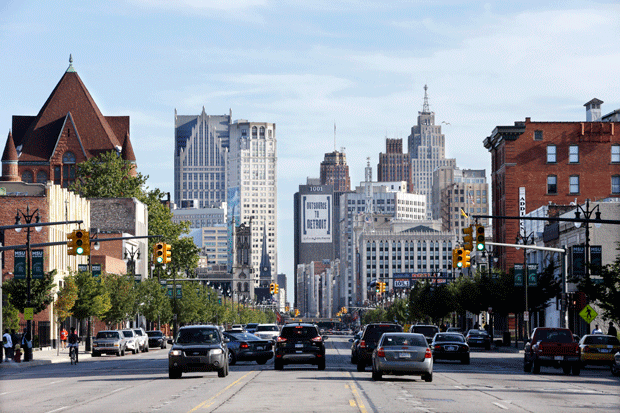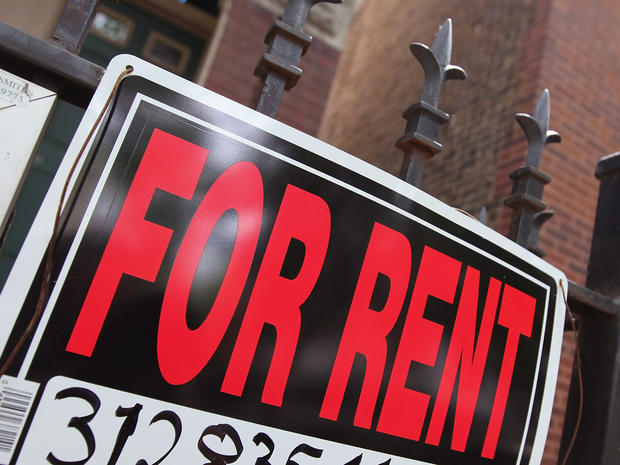Why the American Dream may be withering in some cities
The American Dream promises that any child, regardless of income or background, can climb the socioeconomic ladder with hard work and determination.
But what happens when their parents can't afford that dream because of soaring home prices in some cities and stagnant wages? Social mobility for young people may decline, with unaffordable rents and home prices eating up more than 40 percent of household income, according to research from real estate research firm Zillow.
Ironically, some of today's least affordable U.S. cities have historically served as locations where poor children once found the most opportunities, such as parts of the Northeast and California, Zillow noted, citing research from Harvard University economist Raj Chetty.
But the surge in real estate prices in many of those areas is now raising questions about whether children born in the post-recession years in these cities are being further marginalized.
Take Chicago and San Luis Obispo, California, a town known for vineyards and spas. Children growing up in San Luis Obispo were likely to see higher social mobility, earning about $5,300 more annually as an adult than their counterpart in Chicago.
But since those kids have grown up, real estate prices have diverged drastically between the two locations. Home values jumped 154 percent in San Luis Obispo county since the late 1990s, while home prices in Chicago have only increased by about 30 percent.
That trends holds true when examining home prices for towns that have offered high levels of social mobility to children, Zillow found. The average home value for locations with high social mobility has jumped almost 140 percent since the late 1990s, while cities with few socioeconomic opportunities have seen home values rise only 51 percent.
"This research shows that it's harder than ever for kids who grew up in the country's lowest income households to live in the places where they're most likely to succeed," said Zillow chief economist Svenja Gudell in a statement. "We already knew that high rents and growing housing costs were hitting low-income people hardest, and it's clear the housing affordability crisis on the coasts is a barrier to their upward social mobility."
The research backs up recent findings from The Pew Charitable Trusts about the financial stranglehold many American families are facing since the recession ended. Many low- and middle-income households are feeling the strain as housing, food and transportation costs have risen while income has stagnated.
Rent has been a particularly thorny issue, with tight inventory for affordable housing driving up prices in many cities. Americans in the bottom third of the income distribution spend about 40 percent of their income on housing, while poorer renters on average spend half of their pre-tax earnings on rent, Pew found.
Less "slack" in a household budget -- or the money left over after essential bills are paid -- means that family is less able to build capital, such as savings for college or for enriching activities that their wealthier cohort can afford.
Top job markets such as the San Francisco area and New York now require renters to fork over more than 40 percent of the median income, while Los Angeles rents eat up about half of a typical worker's income, Zillow found.
Generally, cities on the coasts have the highest housing cost burdens, according to a separate study from SmartAsset. The most affordable locations are cities in the Midwest and Western states, it found. Interestingly, the city with highest cost burden is Newark, New Jersey, a city known for its high poverty and crime rates. Almost one-quarter of households in that city, which is located only a few miles from Manhattan, pay least half of their income in housing costs, SmartAsset said.
Below are the least affordable U.S. metropolitan areas for homeowners and renters, based on share of income spent on housing, according to Zillow.
Least affordable metro areas for homebuyers:
1. San Jose, California: 42.6%
2. San Francisco, California: 41.3%
3. Los Angeles, California: 40.4%
4. San Diego, California: 33%
5. New York/Northern New Jersey: 25.2%
Least affordable metro areas for renters:
1. Los Angeles, California: 47.6%
2. San Francisco, California: 46.1%
3. Miami, Florida: 42.8%
4. New York/Northern New Jersey: 41.4%
5. San Jose, California: 41.2%
Most affordable metro areas for homebuyers:
1. Detroit, Michigan: 10.2%
2. Pittsburgh, PA: 10.6%
3. Indianapolis, Indiana & Cleveland, Ohio: 11%
4. St. Louis, Missouri: 11.2%
5. Cincinnati, Ohio: 11.3%
Most affordable for renters:
1. St. Louis, Missouri: 23.4%
2. Pittsburgh, PA: 24.2%
3. Kansas City, Missouri: 24.5%
4. Minneapolis, Minnesota: 24.6%
5. Detroit, Michigan: 24.9%

